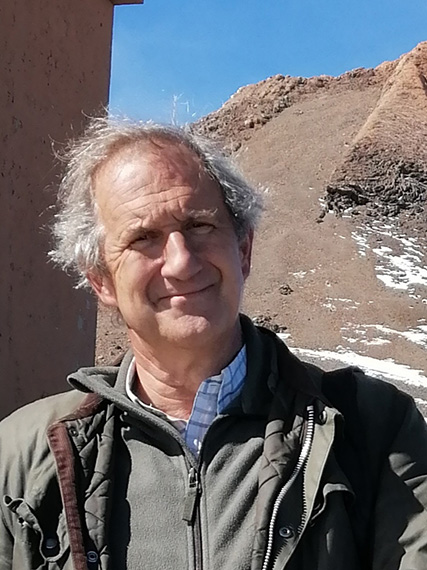CONTRIBUTION
The environmental vocation of José Ramón González Pan (Madrid, 1958) traces to his childhood days in his grandmother’s home in rural Galicia, an experience that steered him towards forestry engineering. Since 2015, he has been Head of the Publications Service of the Autonomous National Parks Agency of the Ministry for the Ecological Transition and Demographic Challenge, where he is in charge of the coordination and edition of more than 200 physical and digital books and more than 2 million informative materials on nature conservation and natural parks in Spain, “one of the best scenarios for researching on climate change.”
After starting out in 1981 as an environmental educator and monitor, in 1987 he became the first director of the National Center for Environmental Education (CENEAM), where he was among the pioneers in incorporating environmental education into the Spanish school system, designing and producing the first training programs with a cross-cutting approach. “Educating for the environment is all-important,” he insists, “because it involves a refashioning of traditional models to factor the global perspective.”
A scriptwriter and director on multiple audiovisual productions in the realms of environmental education, training and wildfire prevention, one of González Pan’s career highlights was his documentary series for Spanish national television: De parque en parque, a journey through the country’s most emblematic natural spaces. “Creating a series covering the entire network of Spain’s 16 national parks and having the chance to interview over 300 researchers, scientists, educators, managers, technicians and local people on their relationship towards them is a luxury available to very few,” he recalls today.
The naturalist declares himself firmly opposed to the staging of nature by artificial means, even if it means “waiting patiently for two weeks at 50 meters’ distance for the image of a bearded vulture in its nest, spending hours in the cold with the camera running. A 20-second shot may not be very profitable, but it is the truth and the truth is irrefutable.”
It is precisely this commitment to the truth of the image that has led him to explore novel audiovisual techniques: “In the national park covering part of Cantabria, I got some stunning 4K shots of bears with special photo-trapping cameras. You realize that when the animal is not aware that there are people around, it behaves in a totally different way.”
González Pan has also contributed to multiple media outlets as an expert on fire prevention and firefighting, a task whose importance is thrown into sharp relief by the fires that recently devastated much of Spain. “Fire may be an element of nature,” he remarks, “but in our hands it can become a major risk to biodiversity. And it is vital to get across that we should be far more concerned than we currently are.”
He has worked as an environmental columnist for Cambio 16 and as a contributor to El País, where he has published more than a hundred articles on biodiversity. In the course of his career, he has witnessed a sea change in the media’s receptiveness to biodiversity issues. “Before, awareness campaigns on forest fires, for example, were paid for out of public funds, but now it’s the media who have taken on this role. We no longer wait for a media plan to finance a campaign, it is the journalists themselves who are helping raise awareness.”
González Pan’s interest in biodiversity conservation, closely linked to geography and landscape study, has led him to author and/or coordinate publications on the Picos de Europa, Doñana, Las Tablas de Daimiel, Sierra de Las Nieves and other national parks.
Despite having carved out a path stretching over more than three decades, he has lost none of his desire to learn: “What drives me is having to force myself to go on learning and studying so I can answer complicated questions in a simple way.”

